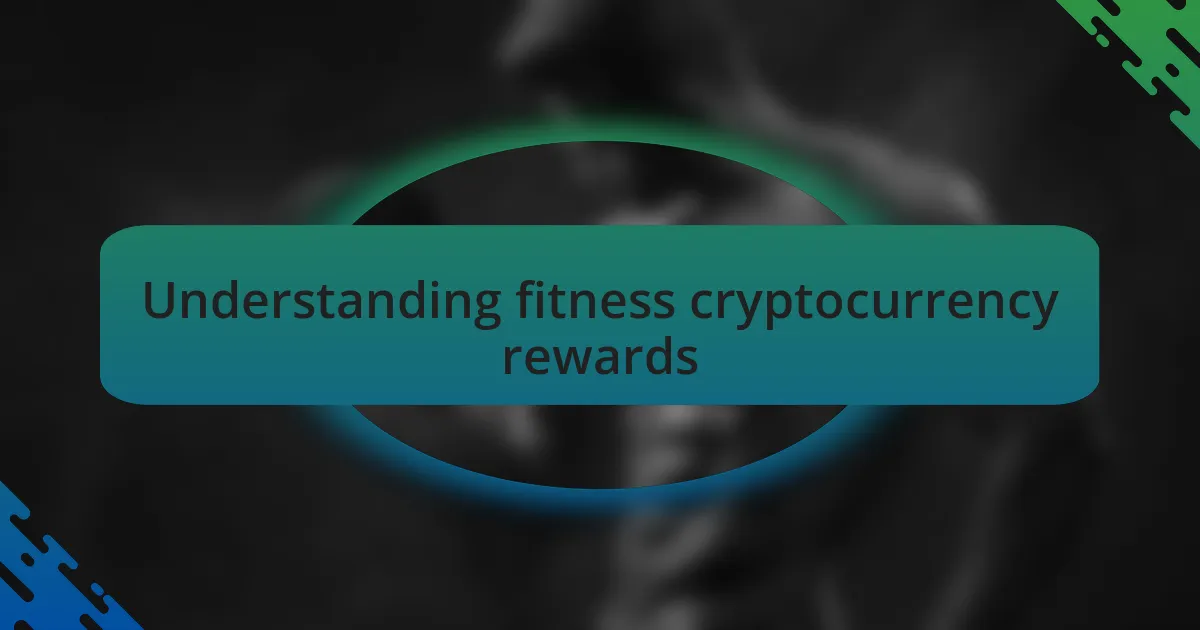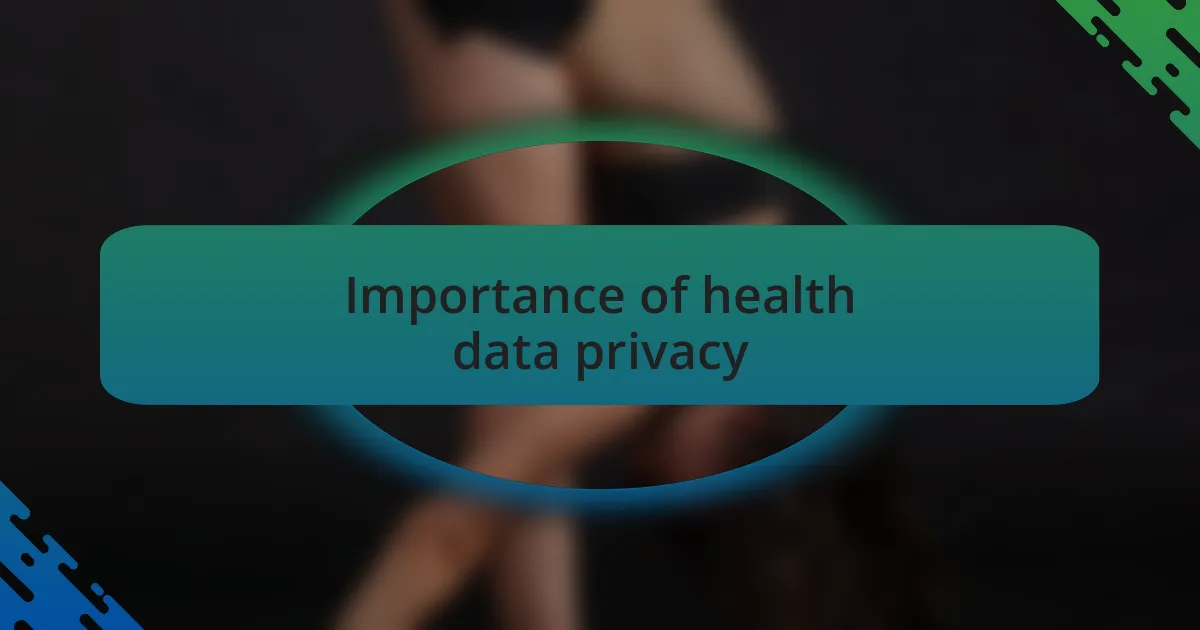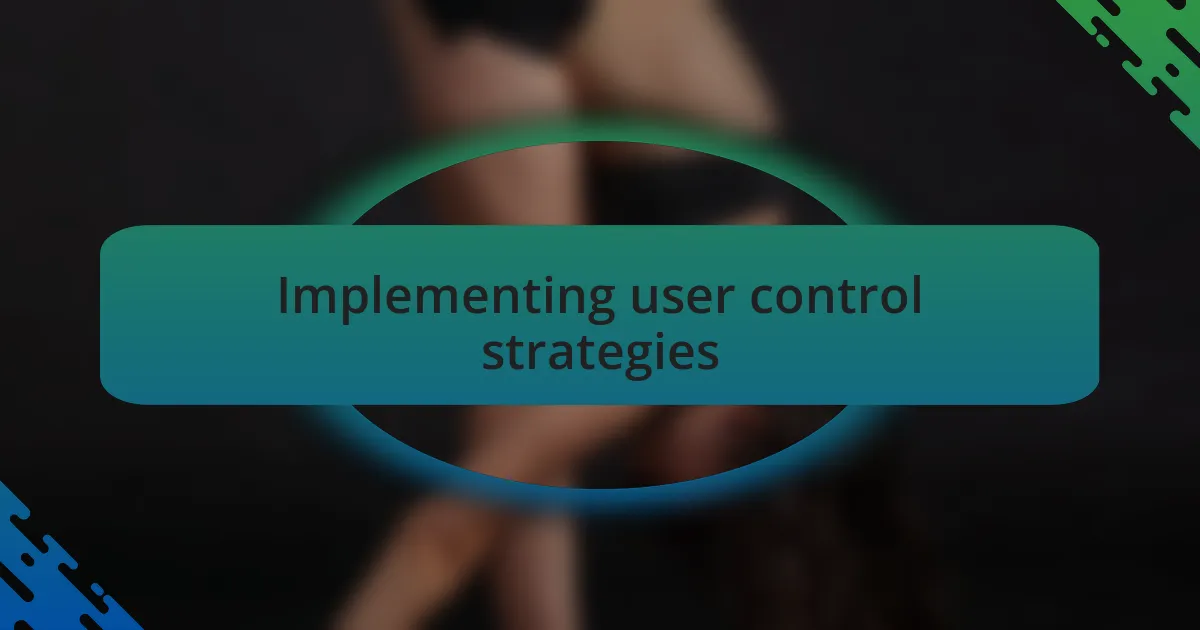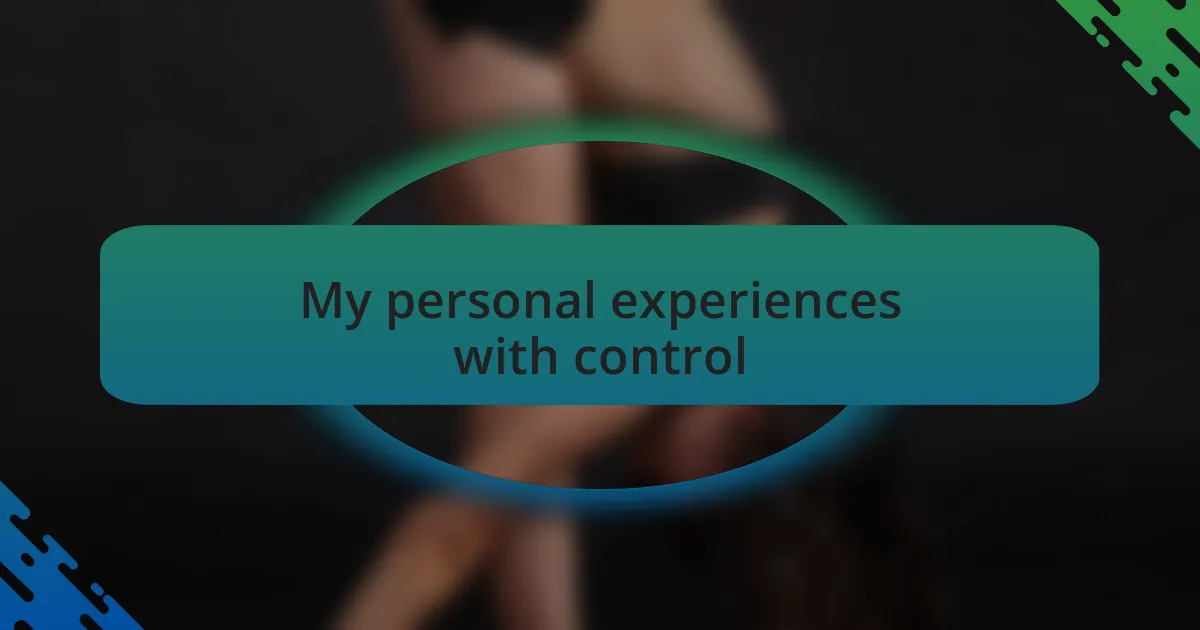Key takeaways:
- Fitness cryptocurrency rewards merge health and technology, motivating users to stay active while offering financial incentives.
- User control over health data enhances engagement and trust, allowing individuals to manage their information and privacy settings effectively.
- Health data privacy is crucial; users need to feel secure about their information to fully embrace fitness technologies.
- Implementing user feedback and providing clear educational resources can improve user control and empower individuals in their health data choices.

Understanding fitness cryptocurrency rewards
Fitness cryptocurrency rewards are an innovative fusion of health and technology that incentivizes individuals to stay active. I remember the first time I earned tokens just by tracking my daily steps; it felt like a game-changer. Have you ever thought about how simple actions like walking could contribute to both your fitness goals and a potential earnings goal?
Participating in fitness cryptocurrency platforms encourages a sense of community among users. I often find myself sharing my progress with friends who are also involved; there’s something motivating about cheering each other on. It’s fascinating to realize that while we’re focusing on our health, we’re also part of a broader movement that values well-being in financial terms.
The mechanics behind these rewards can seem complex at first, but they ultimately serve to make fitness more rewarding. When I first delved into this space, I wondered: how does earning cryptocurrency for exercising even work? Understanding that my workouts could translate into tangible rewards has not only kept me accountable but also opened my eyes to new financial possibilities—all obtained through good old-fashioned movement.

The concept of user control
User control in health data is all about empowering individuals to manage their own information. I often think about how much we share online and the degree to which we understand that data is our personal asset. When I first started using fitness apps, I felt a mix of excitement and apprehension—who really has access to my health information?
In my experience, having control over my health data has reshaped how I engage with fitness platforms. One time, I was surprised to discover that I could choose which metrics to share and with whom. This gave me a sense of ownership and privacy that felt critical; it’s like being the captain of my own health journey. Do you feel the same way about your data?
The essence of user control extends to how we choose to interact with fitness rewards. For example, I remember having a conversation with a friend about her reluctance to participate in data-sharing exercises. We realized that understanding the benefits could enhance trust; when I know what data is used and why, it feels much less daunting. This is what user control is all about—transparency that cultivates confidence.

Importance of health data privacy
Maintaining health data privacy is crucial in today’s digital landscape. I remember when I waited anxiously to receive my health report online—it was empowering, but a nagging worry crept in. What if that sensitive information fell into the wrong hands? This concern highlights the need for robust privacy measures to safeguard our personal data and foster trust between users and platforms.
Consider this: each time we share our health data, we’re entrusting companies with intimate details about our lives. This trust should not be taken lightly. I often reflect on my own experience with a fitness tracker that demanded excessive permissions. It made me question whether the benefits of sharing my data were genuinely worth the risk. Shouldn’t we feel secure knowing that our health information is protected?
The reality is that when individuals feel their privacy is at risk, it can deter them from fully engaging in health and fitness technologies. I’ve seen friends hesitate to use a promising app simply because they feared losing control over their data. This reluctance is a reminder that health data privacy is not just a technical issue; it’s a personal concern that can impact people’s well-being and their willingness to embrace innovative tools. Isn’t it vital that we address these worries to encourage a healthier society?

Implementing user control strategies
One effective strategy for implementing user control in health data is enabling users to customize their privacy settings. I once used an app that allowed me to choose exactly what information I wanted to share, down to specific metrics like my heart rate or daily steps. This personalized approach made me feel more in control and less vulnerable, reinforcing my trust in the platform. Isn’t it reassuring to know that we can have a say in our data sharing?
Another key component is educating users about their rights and the implications of their choices. I remember feeling overwhelmed when presented with terms like “data anonymization” and “opt-in consent.” When platforms clearly explain these concepts in simple language, it can demystify the process and empower users. Why should navigating health data privacy feel like solving a puzzle?
Finally, integrating feedback mechanisms can significantly enhance user control. I’ve often wished apps would ask for my input about their privacy practices, creating a two-way dialogue. By giving users a voice, platforms can adapt to our needs and concerns, fostering a sense of ownership. Isn’t it time we shift from passive consent to active participation?

My personal experiences with control
When I think about my experiences with controlling my health data, one memory stands out vividly. I once used a fitness tracker that asked for my permission to share my workouts with the community. Initially, I hesitated, feeling exposed, but ultimately chose to share my progress. That decision not only felt empowering; it sparked a supportive connection among users, making me realize the positive side of sharing while maintaining control.
Another moment that made an impression on me was when I encountered a platform that allowed me to review and delete my data whenever I wanted. I remember the rush of relief I felt knowing that I could take action if I ever changed my mind about what I shared. It’s liberating to know that I’m not locked into a decision, but I also wondered – why don’t more platforms offer this flexibility?
Recently, a new app caught my eye because it provided clear explanations of their data policies right upfront. As I browsed through, I found myself nodding along, appreciating the transparency. It brought to mind my earlier frustrations with vague privacy terms. I asked myself, how can we expect users to trust a platform if they don’t understand what happens to their data? This experience reinforced my belief that user control isn’t just about the choices we make; it’s about ensuring those choices are informed and respected.

Recommendations for better user control
For better user control over health data, it’s crucial to implement customizable privacy settings. I remember trying a wellness app that let me choose exactly what data to share and with whom. This tailored approach gave me confidence; I felt empowered instead of restricted, and it highlighted how personalization can enhance my relationship with technology.
Moreover, platforms should actively encourage user feedback on data control measures. I’ve often found myself wondering if my voice mattered in these discussions. When a health app reached out to gather opinions on their data sharing practices, I was surprised by their genuine interest in user experiences. This not only built trust but also made me feel like a valued part of the system.
Lastly, consider incorporating educational resources that explain data use in layman’s terms. I’ve often skimmed through convoluted legal jargon that left me more confused than informed. When I found an app with concise, approachable guides on their data policies, it was like a light bulb went off for me. How can we make better decisions without clear information? Providing this clarity fosters a sense of control and encourages users to engage actively with their health data.